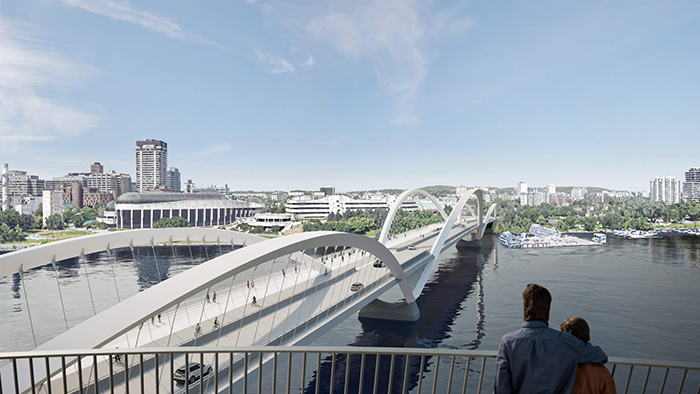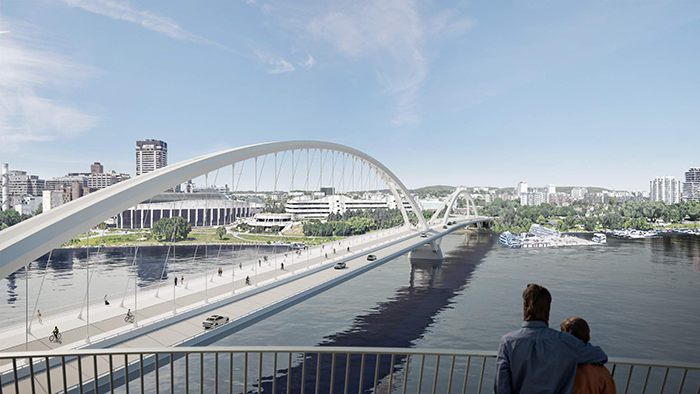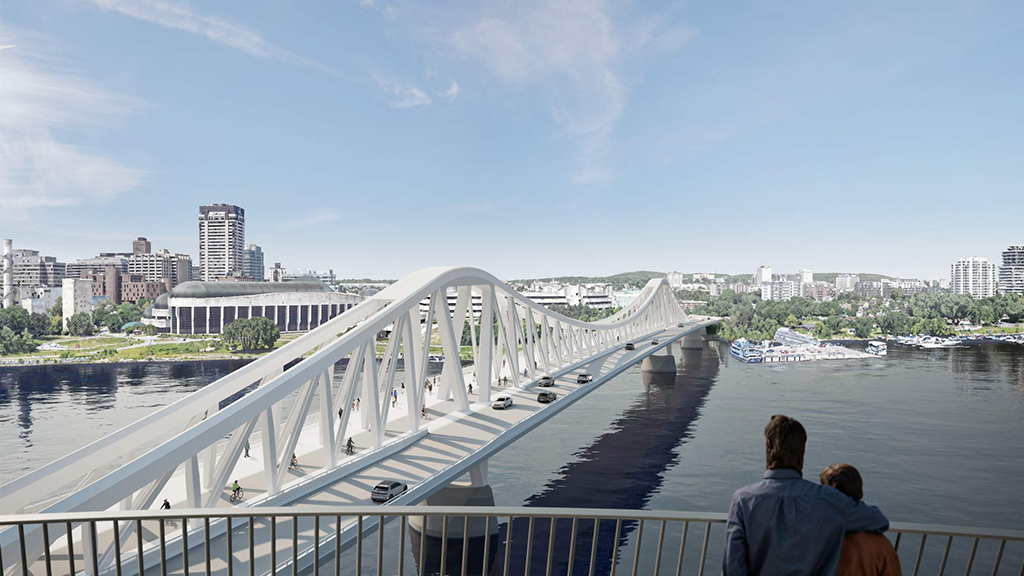GATINEAU, QUE. — National Capital Commission (NCC) and Public Services and Procurement Canada (PSPC) officials recently presented three proposed designs for the new bridge to the NCC Board of Directors as a lead-up to public consultations for the replacement of the Alexandra Bridge.
The project team reviewed a wide range of potential solutions in recent years, indicates a release, adding the designs were developed according to performance criteria for the bridge’s design and comments from the public, Indigenous communities and stakeholders.

A progressive design build model is a collaborative approach that will enable the architecture, engineering and construction team to work with the integrated project team, a working group made up of PSPC and NCC representatives and a technical adviser, to bring the design to completion and further develop the project requirements.
The replacement work should begin in 2028, and the new bridge is expected to be operational in 2032.

Three designs were retained following a multi-criteria assessment:
- Rendez vousdraws attention to the river as a foundational environmental and social component of the landscape. Its clean, contemporary lines lend prominence to its intersection with other features of the landscape, such as the escarpment on the south shore, Jacques Cartier Park and the Gatineau Hills, which are clearly visible from the bridge and lookouts on both sides of the river.
- Echoreinterprets features of the Alexandra Bridge, preserving a strong connection to the past. Some of the structural logic, form and pattern of the bridge is inspired by the Algonquin birchbark canoe.
- Motionis inspired by the American eel and pays homage to the river’s ever-changing, dynamic movement. The design’s three defining rolling arches allude to the river’s flowing water, the contours of the shoreline and adjacent escarpment, and the curved façade of the Canadian Museum of History.
The comments received during the consultations will enable the team to propose a recommendation as to the final design.
The final proposal should be submitted in spring 2025 for approval by the NCC Board of Directors.
The procurement process needed to demolish the current bridge and to design and construct the replacement bridge will be launched in the next few weeks. Interested firms will be invited to respond to the upcoming request for qualifications.
The current Alexandra Bridge is 120 years old, is reaching the end of its useful life and needs to be replaced. The main cause of deterioration is long-term exposure to the elements and salt from winter de-icing and splashing from vehicles. In spite of mitigation efforts and various investments over the years to slow down the structure’s deterioration, corrosion has set in and is spreading quickly.



Recent Comments